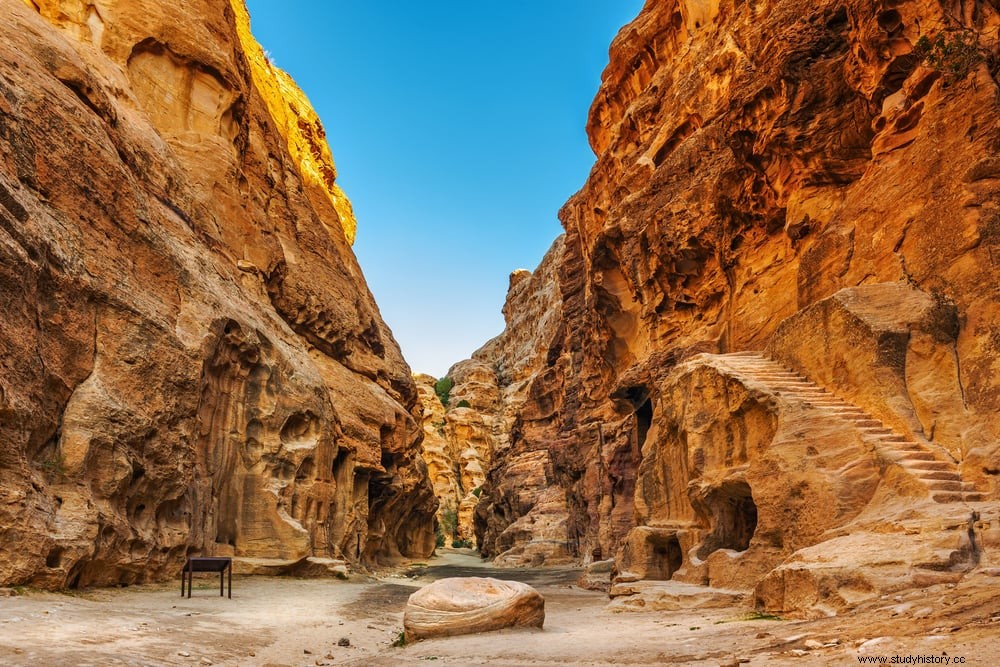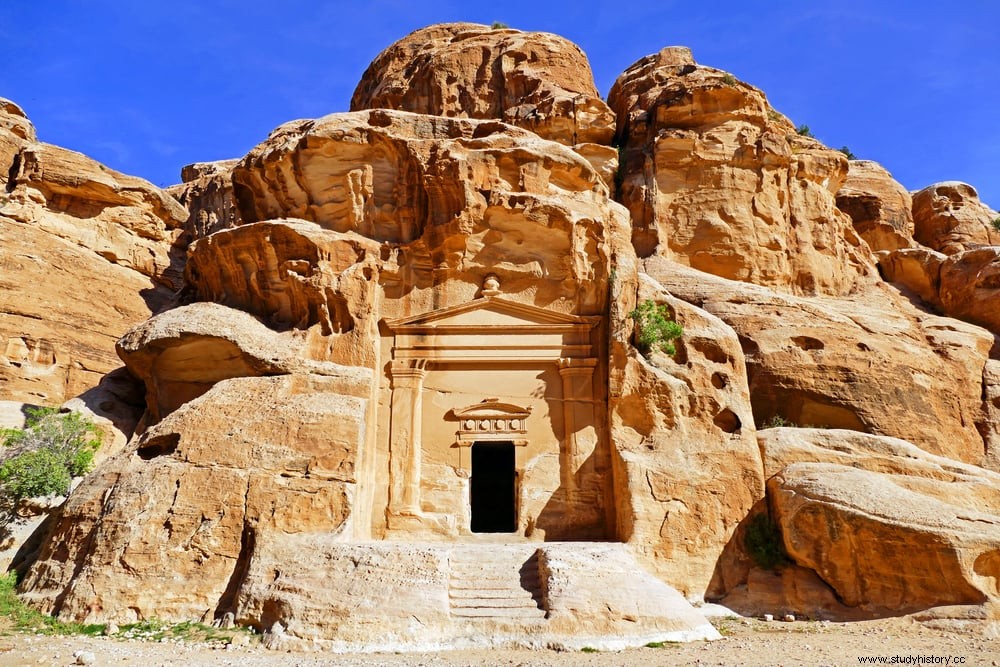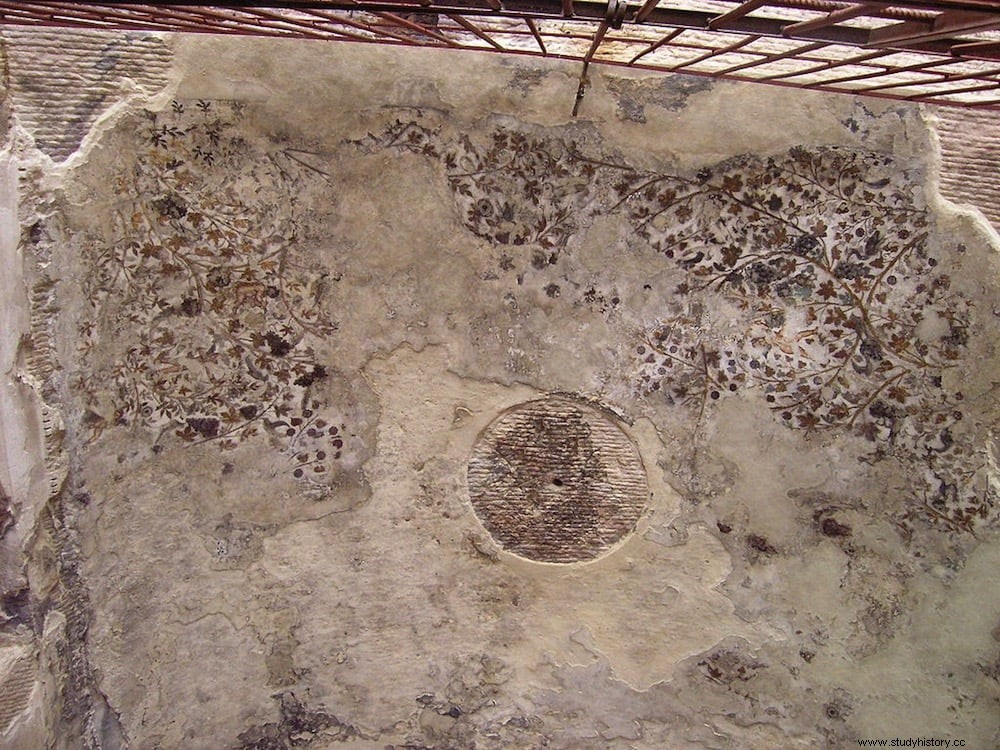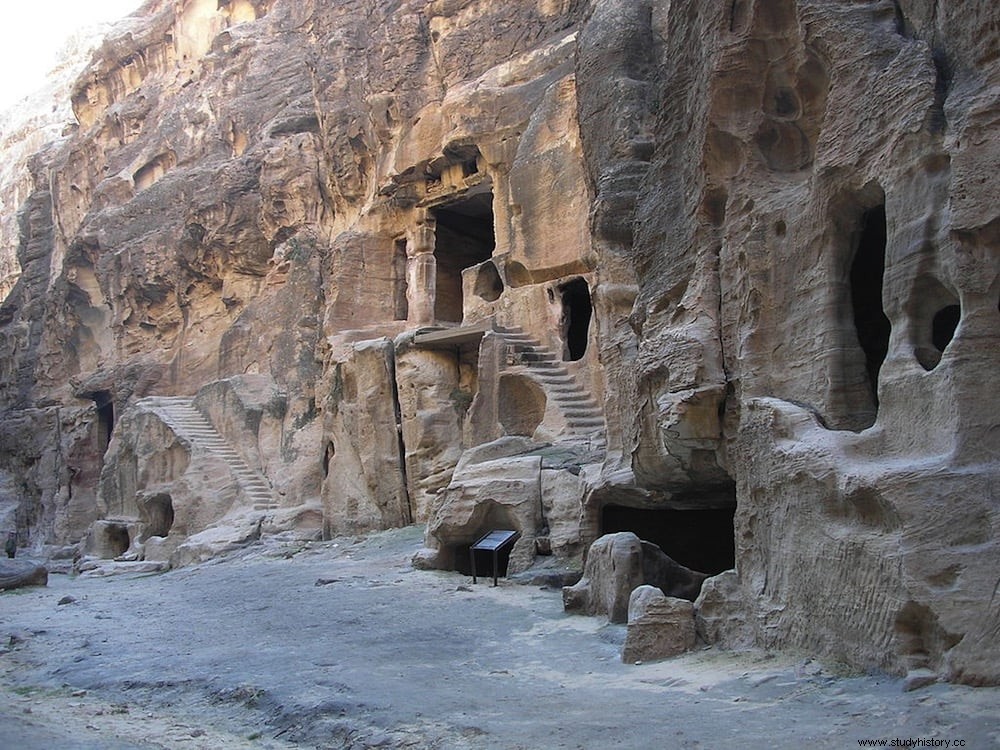Jordan has its most emblematic and recognizable tourist icon in Petra. The Siq gorge, the Treasury façade, the hypogea, the theatre, the ascent to the Monastery on a donkey...
All these wonders are concentrated in a city half-hidden in the desert that attracts hundreds of thousands of visitors every year and since 2007 is part of the new Seven Wonders of the Modern World .
What many do not know is that it is not the only Nabataean city; Not far away, about eight kilometers to the north, there is another with similar characteristics although much smaller in size, which is why it is called Little Petra .

Little Petra was built in the 1st century AD, probably as an outer quarter of his older sister, at the height of that peculiar civilization. It is located in a mountainous area wedged between the desert, the Jordanian Rift Valley and the Dead Sea, near the urban center of Wadi Musa and the Neolithic Beidha archaeological site , which probably had his influence in deciding the Nabataeans to settle there, as it was still inhabited at the time.
Its Arabic name is Sik al-Barid, which means The Cold Canyon , because the high walls that surround it make it difficult for the sun's rays to pass through.
As in the great Petra, it is accessed through a narrow gorge half a kilometer long connecting three open areas larger in the same massif of sandstone. In this complex there are triclinia carved into the rock for commercial use as well as caves or cavities, also artificial, that were used as homes; some conserve remains of polychrome decoration on its walls, with a Hellenistic style and fundamentally plant themes, something of essential importance because they constitute the only surviving mural sample of Nabataean painting on-site .

In this sense, new buildings and rooms are continually being discovered, such as the biclinium appeared in the eighties and presented in 2010 already completely clean of the soot that blackened its ceilings and that came from the bonfires that the Bedouins lit to warm up and cook in later occupations; it is known as the Painted House and in addition to the fantastic frescoes (with Dionysian motifs but also animals and putti very similar to those of the Pompeian House of Livia) it has several large cisterns around it. to collect the rain.
After all, it is believed that the caravans had to stop in that neighborhood for the corresponding administrative registration, which would imply the need for water for the camels and travelers; That is why there are also many channels to distribute the liquid element.

Other outstanding sites are the temple carved into the rock, of which hardly anything is known as it is pending study but which actually seems to be a triclinium , and a climb to the end of the canyon that leads to the top of the mountain, where a viewpoint has been located that allows you to obtain impressive panoramic views of the surroundings:an ocean of stone shaped by wind erosion, which has endowed it with fantastic shapes and colors, and which can be explored freely by paying the entrance fee to Petra Mayor; there is even a six kilometer trail that connects with it in Qattar Ed-Deir and that it is advisable to do with a guide so as not to get lost because it lacks signs (it is also possible to do the reverse route, once the visit to Petra is over). It is accessed separately and has the advantage that it will be visited almost alone , because people basically focus on the big city.
Little Petra was abandoned in the 7th century after a period of progressive decline, and as happened with her older sister, she fell into oblivion. Only the aforementioned Bedouins used to come to camp inside, sheltered from the heat of the day or the cold at night.

Jacob Burckhardt , the discoverer of Petra in 1812, did not know about this reduced version or, at least, did not leave a testimony about it. Without being unknown, the news about the place dates back only to the fifties of the 20th century, when the British archaeologist Diana Kirkbride she extended her excavation campaign to both cities, although she considered them one.
In 1981 UNESCO inscribed the area (the two Petras plus Beidha) on its World Heritage list. as a single archaeological park of two hundred and sixty-four square kilometers.
